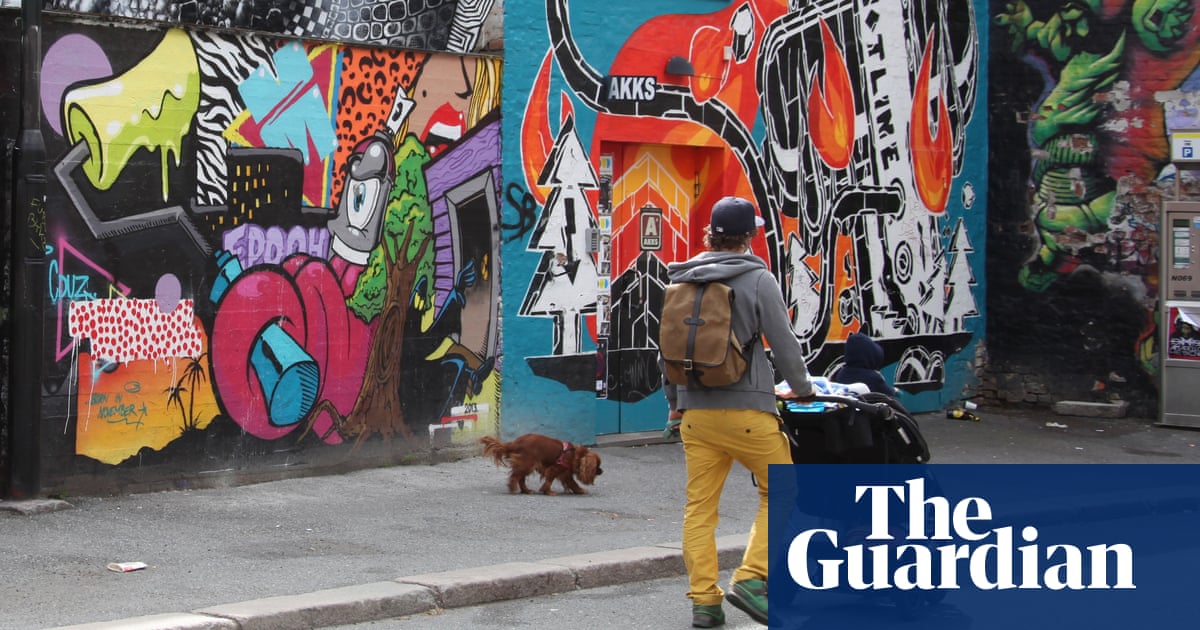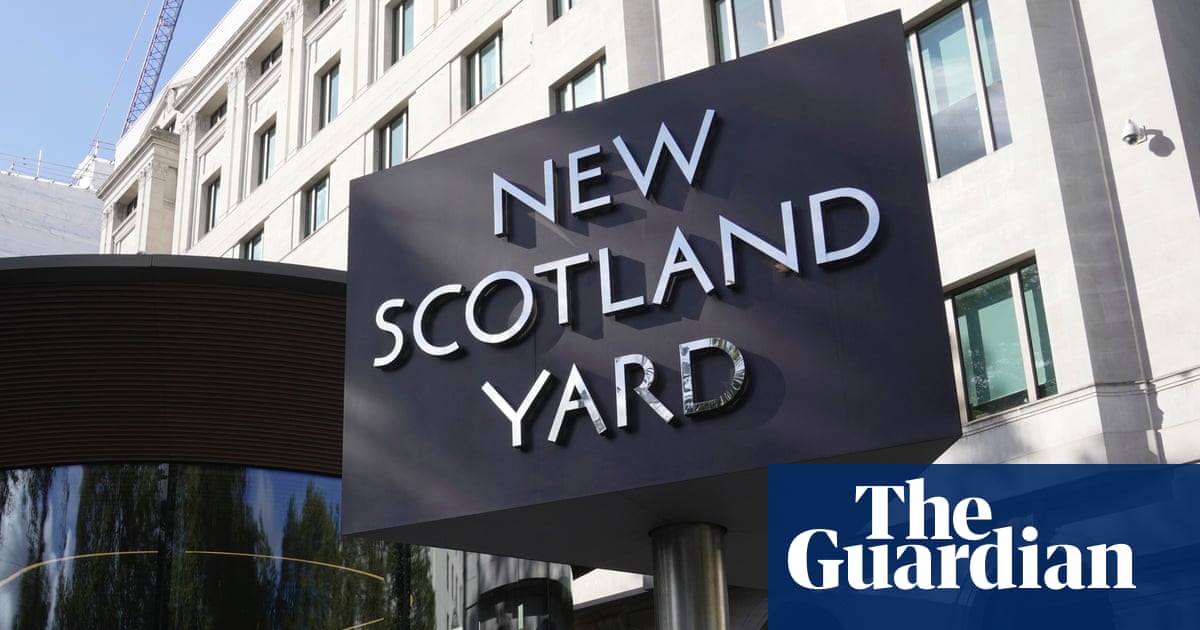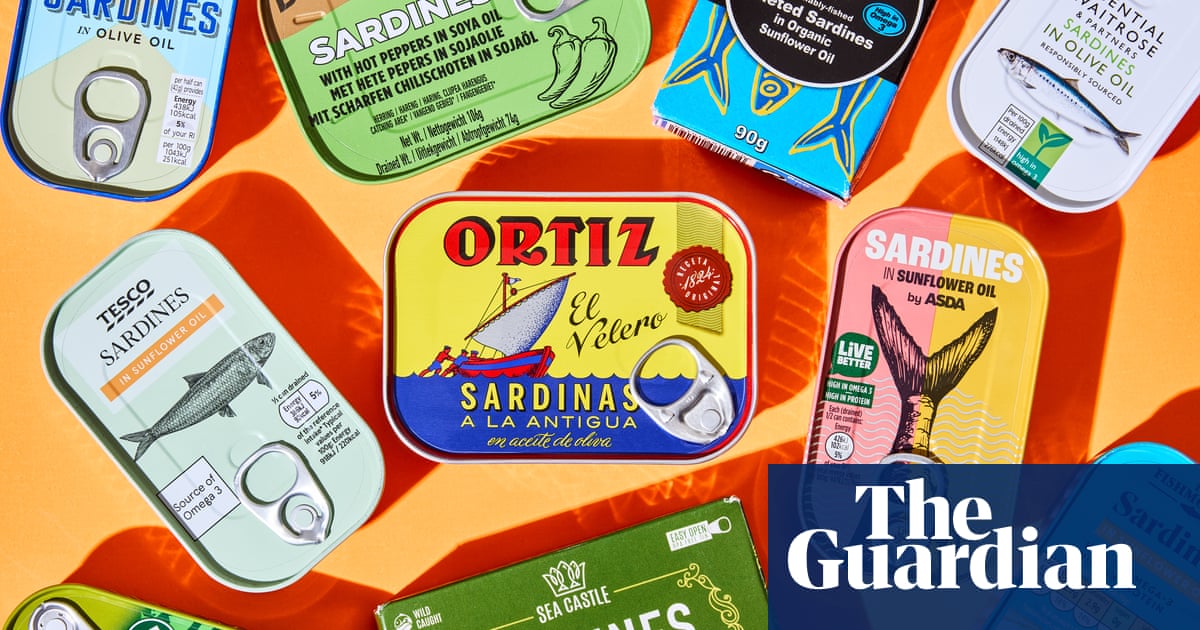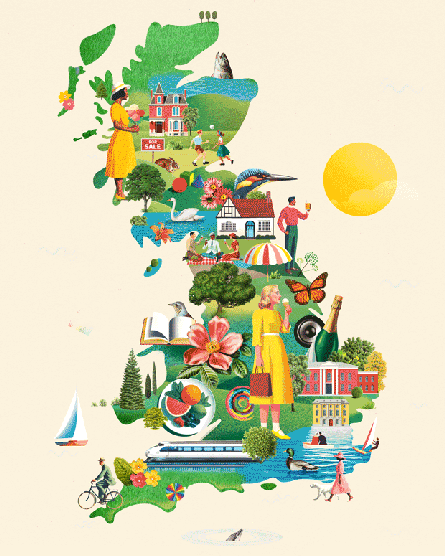
What makes a place somewhere good to live? Where might we be happiest if we had the choice of going anywhere? It’s an almost impossible question, as we do not all thrive on the same things, but there are some that are universally agreed to be conducive to cheeriness.
When we tried to work out the happiest places for Guardian readers, easy access to countryside and parks, sea, lakes and rivers were high on the list of ingredients, as studies have shown that getting out and about in nature can help improve your mood.
Being fit and well, and able to see a doctor when you are not, are also helpful, so we looked at the average driving time to GPs, hospitals, pharmacist and dentists. These sets of data, together with information about air quality were contributed to by the Geographic Data Science Lab at the University of Liverpool.
The things that make life easier are also likely to lead to a happier life. For this reason we included broadband speeds, marking areas down where, according to Ofcom, they were below 30MB. We thought about transport, and what could take some of the strain out of travelling. Our measure of this was how far you could get on public transport within half an hour, reflecting the local infrastructure and ease of getting around without a car. And we included crime figures.
But this is a list for Guardian readers, so we wanted to reflect the importance of culture and community. We gave extra weight to these factors, as measured by proximity to cinemas, theatres and museums, pubs and libraries, using data from sources including the Food Standards Agency, and various industry reports and listings websites.
For reasons concerning lack of easily comparable data, we kept our analysis to England, Scotland and Wales. We mean no disrespect to some of the most glorious areas of Northern Ireland.
Our lengthy initial list was the basis for discussion, research and on the ground reporting. Out of that came our pick of places that generally scored highest as happy places to live.
There may well be people who disagree with our choices. And I’m afraid we cannot guarantee a joyous life to everyone who lives in any of the places we have featured. But one of them could be your happy place.
Hilary Osborne
The top three
1. Berwick-upon-Tweed
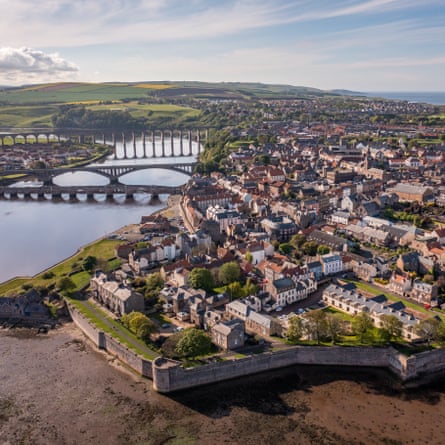
Admittedly it was eight centuries ago, but the Guardian’s happiest place to live was once hailed as the Alexandria of the north because of its fabulous commerce and wealth. Today, Berwick-upon-Tweed remains an often overlooked jewel. Yet people who know it, adore it – it is a great place to live with community spirit in bundles.
Architectural expert Nikolaus Pevsner, no less, described Berwick as “one of the most exciting towns in England” and Michael Palin once said: “It feels like somewhere where stories happen and where stories are told.”
There’s certainly a lot of history here. The town switched between England and Scotland at least 13 times until, in 1482, it became England’s most northerly outpost.
The biggest draw for many is the heritage and the architecture that tells its story, with the Elizabethan town walls considered some of the best preserved in Europe. They were built to keep out marauding Scots, resolute that Berwick was not English, and were the most expensive undertaking of England’s golden age. Walking them takes about 45 minutes but is well worth it. Close your eyes and you can feel the history, open them and the views are sensational.
Berwick was LS Lowry’s favourite holiday destination and a place where he made more than 30 sketches, drawings and paintings including one of Bridge Street which, wonderfully, looks more or less as it did when he painted the scene in 1938.
Today there is a Lowry Trail (about three hours), taking in cobbled streets, romantic riverbanks and the big, sandy, fun Spittal beach. When there was an attempt to recreate the painting last year, there was no shortage of volunteers – a reflection of the importance of community in Berwick.
Community is also in evidence each May, when crowds gather for the Riding of the Bounds, a celebration of the traditional horse ride that was made to check the security of the town’s boundaries.
Berwick’s markets on Wednesday and Saturday are popular and busy. Day-to-day shopping is great with plenty of interesting independent shops, whether the Vintage Department Store at No 1 Woolmarket, vinyl at The Mule on Rouge, or books you didn’t know you wanted at Slightly Foxed.
For a place as small as Berwick – the population is around 13,000 – there is an impressive cultural offering including the town’s annual eclectic film and media arts festival.
A £4.5m lottery grant was recently announced for a project that will transform Berwick’s historic barracks, designed by Hawksmoor, into a new arts hub. Part of that includes providing a new home for a fabulous collection donated to the town by the shipping magnate Sir William Burrell. While he’s more famous for what he gave to Glasgow, Burrell left 300 pieces to Berwick including an important Degas pastel called Danseurs Russes.
The town is unquestionably in Northumberland but there’s a definite Scottishness to it, not least the football team, Berwick Rangers, which plays in the Scottish leagues (currently the lowly Lowland League).
The outdoors is great here. Within town are Coronation Park, with its sculpture trail, and Castle Vale Park, which has spectacular views of Robert Stephenson’s 28-span Royal Border Bridge, opened by Queen Victoria in 1850. There are coastal paths to explore, sandy beaches to walk and play on, and the natural beauty of Northumberland all around you.
And if you want a day in the city, Edinburgh and Newcastle are each around an hour and 15 minutes away on the train. No wonder people have fought over it.
Where to go
There’s no shortage of great places to eat including the popular Riverside Cafe, the quirky Atelier, and well-regarded Amran’s Indian Kitchen & Grill. Grape lovers should head to Coxon & Coxon Wine Rooms and beer fans to the multi award-winning Curfew micropub.
What to do
The Maltings is the place for film, theatre and visual arts and there is a wealth of community groups and clubs for all tastes – whether tennis, tai chi, art, bowling, history, or braving the freezing North Sea.
Where to breathe
There are sandy beaches, riverside walks and two beautiful parks. Berwick is also at the top end of the Northumberland coastal path which takes in sweeping, empty beaches and Bamburgh, Dunstanburgh and Warkworth castles.
Where to buy
The average house price in Berwick, according to Rightmove, is £220,000 and even living in the historic centre is not out of the question. Estate agents say Castle Terrace is one of the “most desirable streets” and it’s easy to see why. A six-bedroom semi is on for £760,000.
Mark Brown
2. Evesham
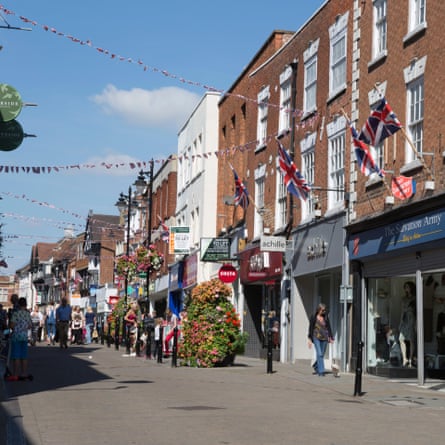
What could be a happier existence than living in the asparagus capital of the UK? In Evesham you can eat the vegetable to your heart’s content, especially during the British Asparagus festival which the town hosts every year from late April.
The reason it is so revered here is because Evesham sits on the banks of the River Avon, surrounded by land that was a paradise for the market gardeners who shaped the area’s economy in the 19th and 20th centuries. Asparagus became the Vale’s of Evesham’s most famous food, and it now has protected food status here.
During summer you may spot Gus the Asparagus Man, the town’s unofficial mascot, who attends events and delivers asparagus wearing a bright green costume.
But even if you’re not a diehard fan of the vegetable, there’s lots going for Evesham. The Worcestershire town has plenty of rural charm, with dozens of pick-your-own fruit and veg fields in summer, and beautiful scenery on its doorstep.
It is close to the scenic (but more expensive) Cotswolds, only 1hr 5 minutes from Birmingham, 25 minutes from Worcester and on a direct train line to London. The M5, taking you up to the north of England, or down to the south-west, is also only 20 minutes away.
Evesham provides a more tranquil existence than the bigger cities many people in the town commute into. You’ll find lots of Georgian and Tudor architecture, pretty parks and family-friendly events – there are medieval re-enactments and an annual food and music festival.
There are plenty of good school choices too – Prince Henry’s High School, founded over 600 years ago, is an academy rated outstanding by Ofsted. Evesham is also one of the few local authorities operating a three-tier school system (meaning pupils attend first, middle, then high school).
Evesham Park in the town centre has plenty of activities for children, including water fountains, a skate park and events such as a hot air balloon festival.
For history and literature buffs, Stratford-upon-Avon and its many Shakespearean attractions are just a bus ride away, and there’s plenty of history to explore in the town itself.
The meandering Avon, which runs through the town, is a particular draw. The barges which once carried cargo along the river have been replaced with pleasure boats. For the sporty, a regatta takes place in May, while in July the river festival offers entertainment and food.
A walk along the riverside in summer, with its swans and pretty greenery, is a real treat. But be warned it does have a habit of flooding, so make sure to check this is not an issue for the area you want to move to.
Where to go
The Royal Oak and the Thatched Tavern are two popular country pubs selling dishes made from local produce.
What to do
The Regal Cinema, in its 1932 art deco-style building, is also home to a coffee shop and evening wine bar.
Where to breathe
A ride on the Hampton Ferry, a pedestrian cable ferry running across the river to the village of Hampton, is a popular activity.
Where to buy
Typical house prices in Evesham range from £275,000 to £350,000. Many choose to live in the town but surrounding villages such as Badsey, Offenham and Wickhamford are also popular.
Jessica Murray
3. Caernarfon
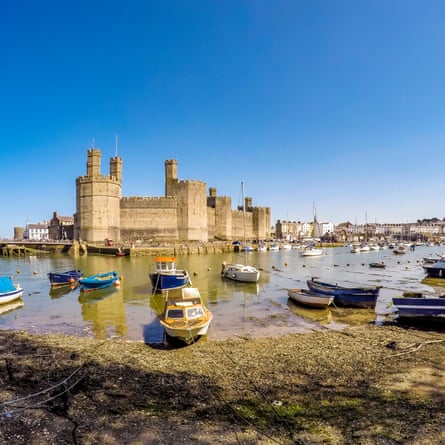
It is difficult, perhaps even impossible, to conjure an image of Caernarfon without the grey stone castle that towers over the town. One of the most historically important buildings of the middle ages, it is where King Charles was invested as the Prince of Wales on 1 July 1969 while the world watched on.
While it may be the focal point of Caernarfon, it is far from all that this town, on the north coast of Wales, has to offer. Both the dramatic mountain landscapes of Snowdonia, and the beautiful sandy beaches of the Llŷn Peninsula, are within an hour’s drive. “You can get a sense of living in the mountains, but you’re only 15 minutes away from the town,” one local estate agent says.
For culture, Galeri Caernarfon houses a cinema, gallery space, and theatre that plays host to music, drama and dance. While the cafe has some of the best coffee in town, the real highlight is its terrace, overlooking the harbour, with views across the Menai Strait to Anglesey. The 16th-century Black Boy Inn offers dishes including Welsh pie – but watch out for the resident ghosts, while Sheep and Leeks serves a fine dining menu, with local seasonal produce at its heart.
Cross the bridge on the far side of the harbour, and you’ll find an expanse of green grass stretching out towards the water, with a skate park, basketball court, and children’s playground. There’s a holiday park, and a golf course up here, but also plenty of space to take a stroll.
While the old town is all painted houses and sloping streets, the more modern part of Caernarfon looks a little tired, with a few empty storefronts, and more charity shops than boutiques.
Although Caernarfon itself has no beach, it is only around seven miles to Dinas Dinlle, a long stretch of sand, more damp and brown than soft and white, with pebbles at the farthest section from the water’s edge, but gloriously peaceful.
The highlight among the beach’s smattering of amenities is Braf cafe, offering generous plates of locally sourced fare; Welsh halloumi, Waunfawr mushrooms, and homemade bread. Sunning himself close to the cafe, one man explains why people like living in the area. “It’s beautiful,” he says, “and sometimes we even get the weather.”
Where to go
Osteria is a Tuscan restaurant with a simple menu of great value pasta and bruschetta.
What to do
Caernarfon food festival draws crowds in the spring. Beacon Climbing Centre is the largest of its kind in north Wales.
Where to breathe
The Lôn Eifion Cycleway runs along a 12.5-mile route to Bryncir through tranquil woodland with views of Snowdonia.
Where to buy
Upper Llandwrog is a desirable spot, with prices between £340,000 and £395,000. Closer to town – and the sea – houses on Bangor Road are around £775,000 for a four-bedroom property, or £330,000 for a two-bed bungalow.
Hannah Al-Othman
And the best of the rest … (in no particular order)
North
Durham
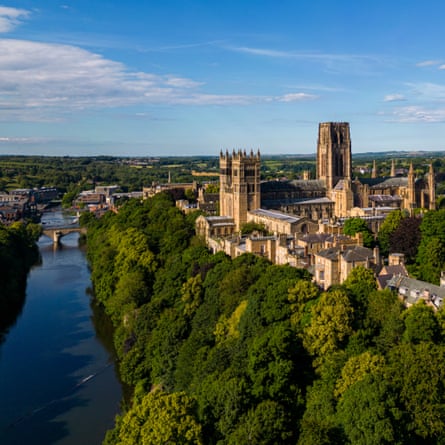
The author Bill Bryson was on a train to Newcastle when, impetuously, he got off at Durham and fell in love with the place deeply and instantly.
“Why, it’s wonderful,” he wrote in Notes from a Small Island. “A perfect little city – and I kept thinking: ‘Why did no one tell me about this?’”
Bryson was so enraptured he added: “If you have never been to Durham, go at once. Take my car.”
He was articulating what people who live there already know: why go to York or Edinburgh when you can go to magical Durham. There’s something about its pocket size, genuine friendliness, wealth of places to eat and drink, and world-class heritage.
That of course includes the cathedral, arguably the nation’s finest. The Guardian’s art critic, Jonathan Jones, described it as “one of the most beautiful places in the world” and once you’ve been there, you understand what he means. It’s a place you enter for the first time and your jaw quietly drops.
It was built in the late 11th and early 12th centuries to house the remains of the Venerable Bede and St Cuthbert, the “saint of the north”, a man who sang psalms at night in the North Sea and emerged to bless otters who dried his feet. It was one of the first places in the UK to be designated a Unesco world heritage site and remarkably, is free to enter, although most visitors will feel obliged to stump up the £5 donation that is asked for. Dogs are also welcome.
The cathedral was used in Avengers: Endgame, along with Durham castle, but it is as a backdrop to the Harry Potter films for which it is best known on the big screen. It has become something of a pilgrimage destination for Potterheads who will instantly recognise that the Chapter House was Professor McGonagall’s classroom in the first two films, the place where young students transfigured animals into goblets. The cloister walkways were also used for scenes of Harry, Ron and Hermione walking between lessons.
People who live in Durham are rightly proud of the cathedral, for many it boosts a sense of community. But if you want to witness an explosion of belonging then look no further than the annual Durham miners’ gala, known locally as the Big Meeting. Held on the second Saturday in July, it is seen as “the world’s greatest celebration of community, international solidarity, and working-class life” typically attracting more than 200,000 people. County Durham’s pits might be long gone but the blaze of banners, brass bands and speeches is still going strong.
Durham is also home to one of Europe’s greatest light festivals: Lumiere, a biennial free event which transforms the city into a living outdoor art gallery and attracts huge crowds.
In 2023, visitors were treated to incredible geometric projections on to the cathedral, the work of Spanish artist Javier Riera and Illuminated Bottle Rack (2018), an artwork featuring scores of antique chandeliers, was installed inside the building by Ai Weiwei.
Durham’s annual book festival in October is popular, with a lineup last year that included Pat Barker, Helen Fielding, Alan Hollinghurst, Jackie Kay, Jodi Picoult and Horrible Histories’ Terry Deary. In the summer there’s the always fun Durham Brass festival.
Part of the fabric of Durham is the university and the more than 20,000 students who study there. Surely one reason for there being so many great places to eat and drink.
The city’s medieval streets and confined geography, surrounded on three sides by the River Wear, mean it’s not somewhere for big shops. But there is a great market and the giant MetroCentre in Gateshead is only a 30-minute drive away.
Where to go
The daily queue for brunch at the Flat White Kitchen is an indicator of how good it is. For pubs, try the Half Moon Inn or the Victoria Inn. For fancy tasting menus try both Coarse and Faru.
What to do
Don’t miss the light festival or the miners’ gala. The Gala theatre and cinema is the place for musicals and National Theatre screenings.
Where to breathe
Finchale Priory was once used as a holiday retreat by Benedictine monks and is lovely. Any riverside walk is a joy – look out for the occasional great cormorant.
Where to buy
An abundance of gorgeous properties, old and new, in parts of the city such as Gilesgate and Neville’s Cross. New-build detacheds go for under £400,000.
MB
Chesterfield

The iconic image of Chesterfield is the crooked spire of the Church of St Mary and All Saints, which twists 45 degrees to a tip which is 9ft 6in (2.9m) off-centre. No one is sure of the reasons for its contorted appearance, but in modern times gravity and the weight of lead roof tiles have taken over from the devil as the most likely suspects.
It is the Derbyshire town’s most-famous landmark – making an appearance on the league two football team’s badge – but there is more besides. Chesterfield sits on the edge of the Peak District and is home to one of the oldest open-air markets in England, as well as historic medieval alleyways, churches, museums and grand old buildings. Its blend of urban and rural access (being just a short journey from both the Peak District national park, and Sheffield and Derby) make it a popular place to live.
There’s an annual walking festival in May, and plenty of rambling groups to join. But if hiking isn’t your thing, there is an abundance of other outdoor activities – you can try abseiling, canoeing, caving or scrambling.
There are also green spaces such as Linacre Reservoirs, originally built to supply water to the town and now a haven for wildlife. And in town, Queen’s Park offers fresh air, play areas and, during school holidays, miniature train rides.
When you’ve finished exercising, there’s a strong independent food and drink scene to enjoy. Bottle and Thyme, a family-run restaurant with a focus on ethical and sustainable ingredients, is a big hit locally.
George Stephenson, the renowned “Father of Railways” who helped build the first steam train, spent the last 10 years of his life in Chesterfield and is buried inside the town’s Holy Trinity Church.
Where to go
Lombardis, a bustling Neapolitan eatery in the town centre. The Market Pub serves fresh seafood and more than 100 gins.
What to do
The Grade II-listed Winding Wheel theatre hosts plays, musicals and comedies. Sports fans can play golf and cricket, or head to Chesterfield FC matches.
Where to breathe
The Chesterfield canal, with its towpath known as The Cuckoo Way, winds past some of the earliest staircase locks ever built.
Where to buy
Areas west of the town centre towards the Peak District are the most sought after. In the suburbs you’ll find picturesque villages and stone cottages. The average house price was £202,000 in February.
JM
York
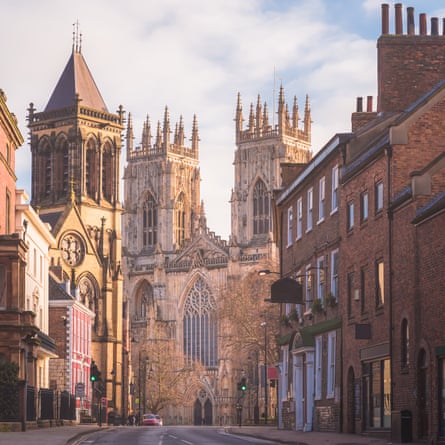
This North Yorkshire city can sometimes be overlooked in favour of its bigger and edgier northern neighbours, but with its cobbled streets, eccentric independent shops and snuggly pubs it contains all the charm of Leeds, Manchester, Liverpool, Newcastle and Sheffield put together.
It was the ancient Romans who first created a town – Eboracum – from a small settlement here and since then York has gone through many iterations, including as the Viking city of Jorvik, with evidence of 2,000 years of history strewn across the highly walkable centre. The medieval period is particularly well-preserved in everything from the city walls – the longest medieval town walls in England – the higgledy-piggledy timber-framed shops of the Shambles, the remains of York Castle known as Clifford’s Tower sitting atop a steep mound, and of course the spectacularly impressive York Minster cathedral.
There’s a modesty and unreserved warmth to York that sets it apart from other places – gentle, big-bearded men greet customers from behind the bars of many of the city’s exceptional boozers. There are at least a dozen pubs that if they were in London would be considered among the best in the capital. House of Trembling Madness, The Fat Badger, Pivni, Eagle & Child, The Hop, Guy Fawkes Inn, Minster Inn, The Punch Bowl and The Market Cat are all centrally located and each a great place to spend a couple of hours over a few locally brewed beers. York’s picturesque river, the aptly named Ouse, that runs through its centre is perfect for a calm walk or as the backdrop for a pint on a sunny evening.
Good food is a given in York’s pubs – as is live music in a lot of cases. Though it is not the cultural centre of the north – that accolade would go to half a dozen northern cities before York – it has a healthy supply of medium-sized touring musicians and comedians. Even the Viking-themed Valhalla bar manages to stay on the right side of gimmicky. It is a great example of York’s sense of fun, and underlines how there is very little here of the desperation to cling to tradition that defines the character of more pompous historical cities.
The throngs of tourists going in and out of the Harry Potter shops are perhaps a downside to living here, although they tend to congregate around the Minster and the Shambles, places easily avoided by locals. The Christmas market, which brings in crowds from across the north, can be contentious but it is hard to find a more festive-feeling location when the season comes around.
York Racecourse is one of the major venues in the racing world – the third biggest in Britain in terms of prize money offered – and hosts everything from classic car events to festivals several times a year.
The popularity of York as somewhere to live is in part due to it being a rare northern city with good rail links to London, thanks to its Victorian role as a major transport hub (it once laid claim to having the largest train station in the world). King’s Cross is around two hours away on a reasonably reliable LNER or Grand Central service.
Two large universities are probably what stop York becoming a place that time forgot, with the students – many of whom choose to stay here when they graduate – keeping the city young and relatively diverse for somewhere surrounded by rural villages.
All this makes York a shining example of a great modern historical city – cool and stylish (yes, perhaps a little bougie), all amid awe-inspiring millennia-old architecture.
Where to go
Spoilt for choice is a phrase that could have been written about the York food and drink scene, with the Michelin guide listing 16 restaurants in and around the city, including one with a Michelin star.
What to do
As well as everything in York itself, Leeds, home of Opera North, the Northern Ballet and a 13,000-seat arena, is only around 30 minutes away by train.
Where to breathe
The North York Moors, a wild expanse of moorland bridging the city and the row of cute North Yorkshire coastal towns and villages, including Whitby, Robin Hood’s Bay and Sandsend.
Where to buy
Bishopthorpe Road (Bishy Road), Clifton and Fulford are among the most desirable areas, while around £250,000 would get you a two-bedroom terrace house in Holgate, within a pleasant 30-minute walk of the train station. Flooding is a city-wide issue, though defences have and continue to be built to mitigate against it.
Robyn Vinter
Padiham

There’s an old saying in Padiham: if you can see Pendle Hill it’s about to rain and if you can’t, then it’s raining. Dry humour and wet weather are part of the charm of this little corner of Lancashire.
Tucked into rolling fields outside Burnley, Padiham (pronounced “Paddy-am”) might be one of the north of England’s best kept secrets. For decades a general gloom seemed to hang over the town, but with a £1.4m fund from the National Lottery Heritage Fund it has cleaned up its 100-year-old architecture and redesigned the high street.
Known locally as “the hill”, Burnley Road is home to all manner of independent shops and cafes. At the bottom end of the town is Rawes Grazing, a food emporium stuffed with delicious local produce and refillable goods. Once you’ve gorged on artisan cheese you could head for a tipple in The Taproom, a single-room micropub that opened 18 months ago.
Young professionals and buy-to-let investors have cottoned on to the town’s resurgence and are snapping up the relatively cheap housing. A charming three-bed terrace house is on sale for £65,000 – about the price of a parking space in London.
“Previously it was older people and families but more recently people from Manchester are realising the value within Padiham and how much they can get for their money,” says Holly Frost, an estate agent at Fardella & Bell. “There’s a lot of green space and people are realising how valuable that is.”
Where to go
Mooch Cafe87, where the staff greet you like an old friend. For an evening meal try The Cellar, housed in a 16th-century former coach house.
What to do
Visit Gawthorpe Hall, a Jacobean country house set in 40 acres of woodland. The annual 1940s weekend, Padiham on Parade, brings in about 12,000 visitors – many in retro uniform.
Where to breathe
The Lancashire countryside. Padiham Memorial Park is also a lovely spot.
Where to buy
River Drive, on the banks of the Calder, is particularly desirable. Bigger detached houses sell for around £270,000 – explaining why so many are moving from Manchester, just 40 minutes away.
Josh Halliday
South
Devizes
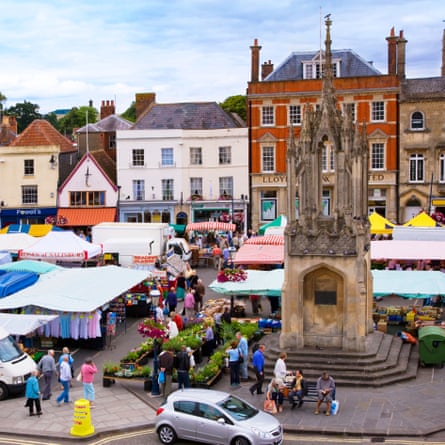
A picture-postcard market town set within the rolling landscape of Wiltshire with an interesting medieval past, 500 listed buildings, a tight-knit community – and you’re not too far from the bright lights of Bristol should you need a quick fix of city living.
The story of why people from these parts are known as “moonrakers” is a nice introduction to Devizes. One night in the 18th century when high taxes on alcohol led to a boom in smuggling, some locals had quickly stashed hogsheads of brandy in the Crammer pond to hide them from approaching excisemen. They were retrieving them with hay rakes when the suspicious officials returned demanding an explanation for what they were up to. Pointing to the reflection of the moon on the pond they claimed they were trying to rake in the “giant cheese” they’d found. Dismissing them as drunk or foolish, the excisemen went on their way and the locals got away with their booty.
The people of Devizes are fond of the legend. There is a plate telling the tale by the renowned Wiltshire ceramicist Mary White in the Wiltshire Museum while one of the local netball leagues is named the Moonrakers League.
There’s a cosiness to modern day Devizes. There is a modest Sainsbury’s and an M&S Simply Food but this is a place of independent shops. The Walter Rose & Son butcher’s has been selling meat since 1847. The hardware store down the road, Roses, was established in 1947. Devizes Books Ltd, sited in a lovely Georgian building, has been operating for almost half a century. A weekly Thursday market has taken place for three centuries and indoor traders set up each day in the historic Shambles, off the market square.
There is no railway station – the town council is campaigning for one – but the mainline between London and Bath and Bristol is accessible at Chippenham, 12 miles away. The lack of a train station adds to the sense of self-containment. This is no commuter town.
Politics is fun here. The majority party on the town council is the Devizes Guardians, which is not bound by any particular ideology nor allegiance to a national political party.
Devizes may not have the alternative vibe of Frome, across the border in Somerset, but there is plenty for those who hanker after the mystical, with the Stonehenge and Avebury world heritage sites a short drive away.
There’s a good arts and culture scene. The annual Devizes arts festival presents musical events, poets and authors, literary talks and comedians and each autumn, a food and drink festival includes “delicious meals in very unusual places”.
Where to go
The 16th-century Bear Hotel is all wooden floors and roaring fires when the temperature drops. Table 31 has great breakfasts, lunches, cakes and coffee.
What to do
A guided tour of the Wadworth brewery, which is 150 this year. The Wharf theatre produces in-house musicals, plays, pantomimes, youth shows and live music.
Where to breathe
The Ridgeway path and Roundway Hill, which has views to the Cotswolds and Salisbury Plain. Hillworth Park started life as a private landscaped garden and came into public ownership in 1945.
Where to buy
In the heart of Devizes a four-bedroomed, listed house will cost about £575,000. A decent sized semi just outside town will be around the same or a little less. More modern homes around the centre cost about £400,000.
Steven Morris
Lewes
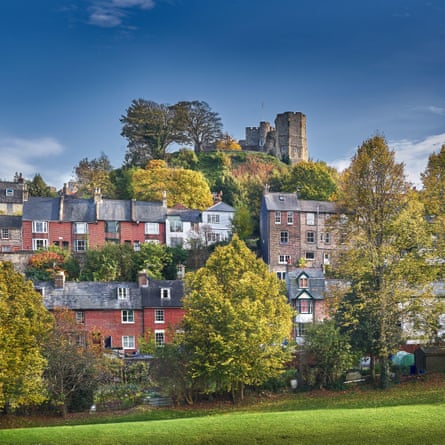
From the top of the tallest tower of Lewes Castle, you can see the chalky downs that ring the red-roofed market town. Lewes is entirely inside the South Downs national park. The same tectonic shifts that built the Alps lifted the prehistoric seabed to become wildlife-rich chalk grassland, one of Earth’s rarest landscapes.
Lewes has a strong sense of history. Bull House, near the castle, was home to radical writer Thomas Paine before he went to America, where his work helped inspire the war of independence. Thomas Paine Legacy has reopened the house and sees Paine’s work as an example of active citizenship, helping preserve contemporary freedom and democracy.
“We have it in our power to begin the world over again,” wrote Paine in 1776. This utopian vision lives on in Lewes in projects like The Phoenix, a sustainable community-focused development on a once-derelict postindustrial site. The Lewes Pound, a local currency aimed at keeping resources in the town, is being discontinued, but its spirit survives. Staff in the Runaway cafe give free tea to the station gardeners, who do the cafe’s flowers in return.
The Friday Food Market, in an 18th-century tower, sells raw honey, probiotic vinegar, organic veg, vegan chocolate and gluten-free cakes, topped with blackberries, figs and avocado ganache. There’s a whole room full of sourdough. Lewes sometimes feels like an eccentric, Bohemian aunt – lovable, easy to mock, but indomitable.
The range of good food in Lewes these days is mouth-watering. There’s bánh mì at Pestle and Mortar noodle bar, classic Sunday roasts in the Lewes Arms, or pasta at brick-walled Squisito in the Needlemakers, a maze of indie shops in a former syringe factory. Artisanal coffee roaster Tigermoth lurks nearby on an industrial estate round the back of Aldi.
Lewes also has an eclectic flea market, a Sunday morning car boot sale and regular seasonal crops of fairs and art shows. The flowery Grange Gardens is an irresistible combination of old stone arches, sunny lawns and dappled pathways, with The Hatch cafe serving real-fruit lollies and tea in china mugs. Across town, Pells Pool, one of the UK’s oldest freshwater lidos, is spring-fed and 46 metres long with a wooded lawn and waterside sauna. The new Charleston gallery, near the station, has great cakes.
Glyndebourne opera house, venue for a summer festival since the 1930s, is three miles east – a calendar fixture for people who love posh picnics, dressing up, and/or world class classical music.
It may be one reason for the joke that it’s easier to buy a bow tie here than socks. It’s true that the clothes shops tend towards vintage, outdoor or boutique so if you need cushion-soled alpaca or strawberry-patterned bamboo, you’re sorted. Otherwise, you might need to head to Argos or hop on the train to Brighton, 15 minutes down the line. Quick trains to London are one reason for the influx of people moving here from the capital.
Local complaints include DFLs (“Down from Londons”) inflating the house prices, lack of nightlife and a dearth of parking spots. Lewesians have even been known to blow up parking meters, a protest that fits the town’s gunpowder-themed traditions. The Lewes Bonfire on 5 November, commemorating both Guy Fawkes and local Protestant martyrs, involves dozens of Sussex societies. It features torchlit parades, burning effigies and flaming tar barrels rolling through the streets.
Where to go
Cafe Vegu, an inventive Korean, and Taith, with good coffee and an elegant menu. Just off Cliffe High Street, Cafe du Jardin offers quiche and croque monsieur in an antique shop courtyard.
What to do
Southdown Sports Club caters to all ages with tennis and squash courts, a hockey club and small gym. The Depot Cinema is in a refurbed former brewery by the station. Lewes Con Club is a not-for-profit community venue, hosting comedy and music.
Where to breathe
Spectacular paths head out of Lewes in almost every direction, whether you stroll along the grassy banks of the River Ouse or scramble up the steep sides of Malling Down, past cowslips and wild marjoram.
Where to buy
Old houses in the town centre and cobbled Cliffe are expensive, but there are cheaper areas on the fringes so prices vary wildly. Some of the 685 sustainable houses in The Phoenix should be available from 2027.
Phoebe Taplin
Newport, Isle of Wight
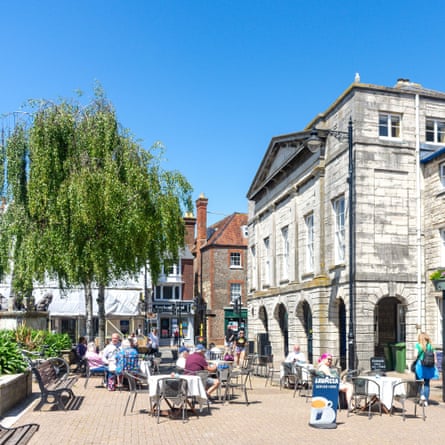
Even the estate agents are discouraging: “Why would you choose the one area on the island where you can’t walk to a beach?” But houses in Newport can be cheaper as it’s inland and the Isle of Wight’s county town is an obvious transport hub with roads and bus routes radiating from it. The buses are unusually good and the nearest beaches are less than five miles away.
Since its revival in summer 2002, the Isle of Wight festival has taken place in Newport’s waterside Seaclose Park. This year’s headliners are Sting, Stereophonics, and Justin Timberlake. For a different vibe on the far side of the River Medina, the reedbeds of Dodnor Creek nature reserve host water rails and willow warblers.
Newport is full of contrasts like this. Georgian and Victorian houses, with gabled roofs and chequered brickwork, are sandwiched between 20th-century supermarkets. It is unmistakably urban, but it’s a short stroll to fields of sheep or an orchid-filled chalk pit. It’s home to the island’s smallest pub and largest cinema.
Charles I was imprisoned in the castle and Nash designed the Guildhall, but the town wears its history lightly. The 16th-century Castle Inn hosts regular karaoke nights and live music. For the morning after, there’s a choice of bakeries, including Scarrots Lane, which helps fund community projects. Grace’s Bakery has just opened a big wood-floored cafe on the High Street. Round the corner, there are pots of fresh herbs on the tables outside Wadhams, a new cafe downstairs from a sustainable fashion school.
A century ago, at the southern end of town, workmen discovered a Roman villa with a bath suite and hypocaust. Today’s new houses are more likely to have air-source heating and solar panels. The Isle of Wight is one of the UK’s sunniest places, with an average of more than five hours of sunshine a day.
Snacks and Ladders, Newport’s dog-friendly board game cafe, has pizzas, burgers and hundreds of games to choose from. Nearby, close to Church Litten playground, the Lord Louis library offers holiday crafts and toddlers’ rhymes. Robin Hill adventure park, just out of town, reopened in April. Medina theatre serves up tribute bands and comedy while the Apollo, in an old Methodist chapel, has drama, musicals and live screenings.
The guy in the record store says he swapped a “tiny flat in Bermondsey” for a three-bedroom house with sea views in Cowes: “No-brainer, really.” Return tickets to London for foot passengers start at around £50, including train, ferry and connecting bus for the hovercraft. Currently the only scheduled passenger hovercraft service in the world, the Ryde-Southsea service thrums regularly over sand and water, scattering seagulls.
After a freezing dip with the new Isle of Wight Bluetits group of wild swimmers on a typically sunny Friday evening in Sandown, one swimmer gestures at the miles of sea, sand and chalk cliffs and asks: “What’s not to like?”
Where to go
The cafe at One Holyrood boasts a suntrap courtyard garden full of tulips and wisteria.
What to do
The community-led Department cultural centre has a bar and innovative theatre.
Where to breathe
To the north, Parkhurst Forest, with its old oaks and tall pines, has a hide for spotting red squirrels.
Where to buy
Carisbrooke has some of the prettiest houses as well as pubs and shops. Neighbouring Shide has large Edwardian houses and a cycle path running into town. Flats start from about £115,000 while three-bed semis cost from £200,000 and detached houses from £350,000. For £1.5m, you could snag a big stone farmhouse.
PT
Exeter
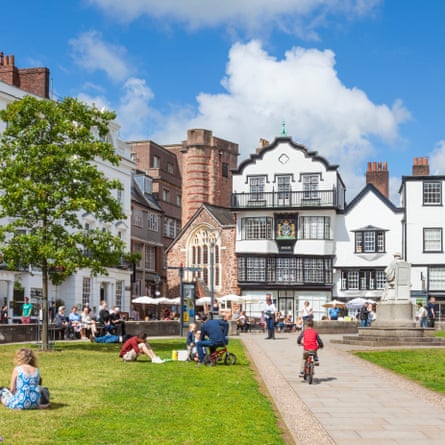
Depending on the wind direction, when you’re strolling along Exeter’s High Street you might catch a sea breeze from Lyme Bay or the heathery scents of Dartmoor.
The cathedral city is lovely in its own right, but it is also the geographical position that many of its residents enjoy – Exmoor to the north, Dartmoor to the south-west, the Exe estuary and the Jurassic Coast to the south-east.
The city has good road and rail connections. Bristol is an hour and 40 minutes away by road or an hour by train. You can be in Cornwall in just 40 minutes. And there’s a small airport.
Not that getting out of Exeter is necessary. There’s plenty to do. The shopping is varied. Most of the high street stores are here but there are also terrific independent shops. On Fore Street you’ll find specialists ranging from a luxury belt maker to a vintage record player restorer.
There is a thriving independent coffee and food scene. With Brixham Harbour, home to one of the UK’s biggest fishing fleets, only 30 miles away, it’s no surprise that fish tends to star on the menus of many of the best places to eat.
Unsurprisingly for a city with a hugely popular university, the arts are strong in Exeter. The lead singer of Coldplay, Chris Martin, was born here and, though Muse are from nearby Teignmouth, the band’s earliest performances were at the Exeter Cavern, which is still going strong. Exeter Phoenix is home to art galleries, a solar-powered cinema, performances, gigs, comedy, talks and workshops.
There are two interesting sports teams to get behind here. The football club, Exeter City – known as the Grecians (nobody is certain why) – play in EFL League One. The club is no Liverpool or Arsenal but it’s a warm, homely outfit and, very unusually for the UK, is owned by its fans. The rugby team, Exeter Chiefs, plays at Sandy Park on the edge of the city and have had great success in recent years.
The Labour party has held the Exeter parliamentary constituency since Ben Bradshaw was elected in 1997. During the wilderness years for the party, Exeter remained a foothold in the Tory-dominated south-west.
Winters tend to be mild here and the spring brings spectacular blossom but there can be surprisingly hefty drops of snow given it is so close to the coast.
The weather is a good topic to bring up – the Met Office relocated here in 2003 and is one of the city’s biggest employers.
Where to go
Sacred Grounds, in McCoy’s Arcade on Fore Street is an award-winning vegan brunch cafe. The Turk’s Head on the High Street is one of the region’s oldest pubs, apparently once frequented by Charles Dickens, and now has a microbrewery.
What to do
Walk, cycle, kayak or paddleboard along the River Exe. The Bill Douglas Cinema Museum focuses on all aspects of the moving image. The Riviera Line runs alongside the south Devon coastline while the South Devon Railway features a 14-mile steam engine round-trip.
Where to breathe
Haldon Forest Park just outside the city. The Exe estuary is of international importance to wading birds while the National Trust’s Killerton is one of Devon’s great estates.
Where to buy
St Leonard’s has a village feel. A three-bedroomed semi may cost more than £500,000. At Topsham on the estuary a two-bedroomed cottage is about £400,000. A detached in Pennsylvania near the university is around £550,000.
SM
Penzance
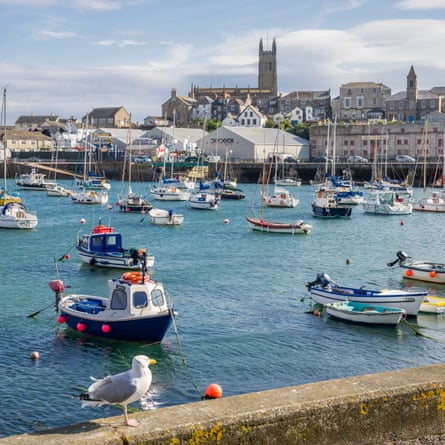
Just 10 miles from Land’s End, Penzance is a mini urban bubble among the wild outer reaches of Cornwall.
With its two-and-a-half-mile seafront promenade and large harbour, it has the key features of a quintessential English seaside town. Plus cobbled streets and rows of Regency and Georgian terraces awash with independent shops, pubs, cafes and restaurants. There are also some prized cultural centres including Penlee House Gallery and Museum.
Access to the incredible landscape surrounding the town is obviously its biggest draw with dozens of beaches – Gwynver, Lamorna Cove and Long Rock to name a few – all within walking and cycling distance or a short drive away.
Penzance boasts the UK’s largest seawater pool, the art deco-influenced Jubilee. Filled on a high tide, the temperature sits a couple of degrees warmer than the surrounding seawater.
Although a tourist hub, the town is not solely geared up for out-of-towners, it still has all key services for its 20,000 permanent residents – major supermarkets, a hospital, library, a college.
And despite being at the end of the line, Penzance is fairly well connected, with non-stop services to Plymouth, Bristol and London. The bus station connects to surrounding towns and villages. Truro and Falmouth are a 55- and 60-minute drive respectively.
House prices in Penzance have an overall average of £324,569 over the last year, according to Rightmove, which is likely inflated by second home and holiday let purchases. Local government data suggests that average household income is just below the national average.
Where to go
Pick your favourite maritime-themed pub; splash out on dinner at The Shore; buy coffee at The Quirky Bird.
What to do
If you’re not on the beach or the water, there’s the Acorn theatre, Savoy Cinema or Penlee House Museum & Gallery. The town is a 20-minute drive from the Minack theatre, probably the most spectacular setting in the UK. Don’t miss the Midsummer’s Eve bonfire during the Golowan festival.
Where to breathe
The South West Coast Path or Land’s End peninsula. Penlee Park is 15 acres with play area and an open-air theatre.
Where to buy
The old town is no stranger to £1m+ properties. Find affordable terraces in Heamoor, a village that is effectively a suburb.
Jamie Grierson
Chichester
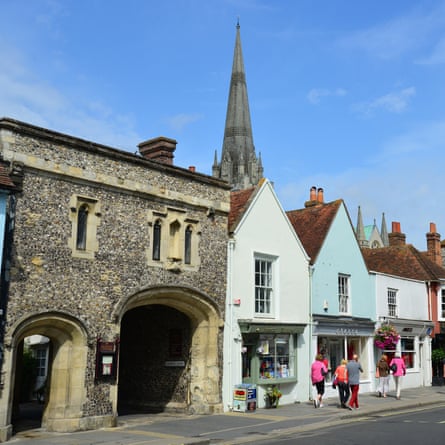
Bounded by the South Downs and the sea, Chichester’s medieval graces have escaped the commuter belt blight because the 90-minute train journey puts it just out of range of London. Dominating the city centre is the 11th-century cathedral with world-class choristers and art by Marc Chagall, John Piper and Elizabeth Frink mingling with Anglo Saxon reliefs and medieval vaulting.
Bishop’s Palace Gardens, which you can stroll around for free, is 14 acres of herbaceous borders and specimen trees tucked between the city walls and the cathedral close. The walls themselves, built by the Romans and now pedestrianised, make for a lofty circuit of the city. Within them, there’s a cafe, most probably, for every day of the month.
The city, rising out of flat green meadows, captivated the artists Constable and Turner. The poet John Keats began writing The Eve of St Agnes, inspired by the medieval architecture, while visiting friends in Chichester and is commemorated by a statue opposite his lodgings in Eastgate Square. Philip Larkin was moved by the clasped hands of a medieval earl and his wife in the cathedral to conclude in his poem An Arundel Tomb, that “What will survive of us is love”.
From the newly opened cathedral spire you can see right across Sussex to the Isle of Wight and Portsmouth, while the remains of a Norman motte and bailey castle rear up from the green acres of Priory Park in the centre of town. Back on the ground you can follow the canal out of the city to Hunston Bridge where the view across the water meadows remains unchanged since Turner painted it in 1828.
However you like to spend your spare time, you will find something to do in Chichester. There’s a weekly street market in the city centre selling local produce and crafts, which is a happy place to potter. Chichester Festival theatre launches new works into the West End and beyond and has a stream of plays, comedy and family entertainment. And you have the great outdoors on your doorstep.
Cyclists can escape the city via a network of paths, and can quickly start to explore the area around Chichester Harbour – a large, wild space boasting fantastic nature spotting, and other more vigorous leisure activities. Continue on your bike around the inlets of the harbour, or instead of riding round it, take to the water. The local yacht club – about five miles out of the centre – has a fleet of boats, so you do not need your own to become a member, and runs social events on land and off.
Where to go
Luckes, an independent deli/cafe. Fine dining at Purchases; Santorini, a Greek restaurant with a weekday three-course lunch for £14.95. The Hole in the Wall has live music and craft beer and The Park Tavern offers a snug stop on the way to the theatre.
What to do
See 20th-century British art in the Pallant House Gallery. There’s racing (horses and cars) at nearby Goodwood.
Where to breathe
The beaches just nine miles away at West Wittering.
Where to buy
A two-bed cottage in Pallant in the centre costs around £800,000. A similar sum would buy a postwar family home in Somerstown, or a three-bed Victorian terrace in Whyke. The Manhood Peninsula to the south ranges from around £300,000 for a two-bed inland to up to £4m in West Wittering. Tighter budgets might find a foothold in the estates within the south-eastern ring road where an ex-council semi starts from around £250,000.
Anna Tims
Cirencester
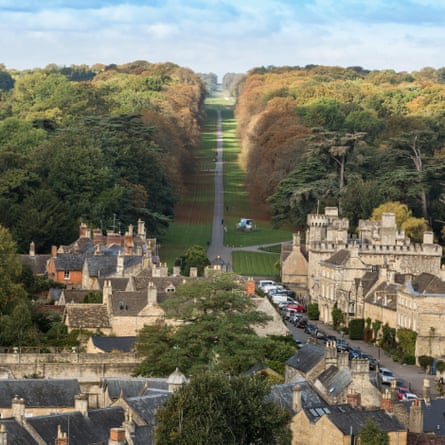
One of many towns that claim the title “Capital of the Cotswolds”, Cirencester has been attracting new residents for literally thousands of years. In Roman times, it was known as Corinium and was the second-largest town in Roman Britain after London.
Historians have suggested the original settlement was founded due to its strategic location on the Roman roads system, but today it’s far more likely to be the heady mix of market town charm and glorious English countryside that draws settlers to Cirencester.
The town is a picturesque pleasure to explore, shop and live in. Narrow, winding streets of Cotswold stone buildings are lined with cafes, restaurants, boutiques and independent stores.
Aside from being wrapped on all sides by the rolling hills of the Cotswolds with its beautiful walks and postcard villages, the town has plenty of green space including the whopping 3,000-acre Cirencester Park. The park, which is protected by Grade I-listed status and home to the world’s tallest yew hedge, is privately owned – locals can get an annual pass for their whole household for £10.
The town is fairly isolated, which can be a pro or con depending on your taste. The nearest train station, Kemble, is a 10- to 15-minute drive away, and from there it’s a quick 1hr 15 minute ride to London Paddington. By car, it’s about 20 minutes to the M4.
Property in Cirencester is not the cheapest, with house prices hitting an overall average of £393,469 over the last year, according to Rightmove. Household incomes in the town are in line with the national average.
Where to go
The Hop Kettle for beer, Sam & Jak for dinner, Jacks for brunch and coffee. Octavia’s Bookshop on Black Jack Street.
What to do
Barn theatre (also doubles as a cinema), Sundial theatre, Cirencester Lido, Corinium Museum.
Where to breathe
Cirencester Park, Abbey Grounds and the entire Cotswolds on your doorstep.
Where to buy
If you’re after the quintessential Cotswold stone terrace or townhouse – the obvious place to start your hunt is the centre but it is also where the prices are highest. The town is surrounded by more affordable new-build estates, including The Steadings, where a three-bedroom home is on for £535,000.
JG
Aylesbury
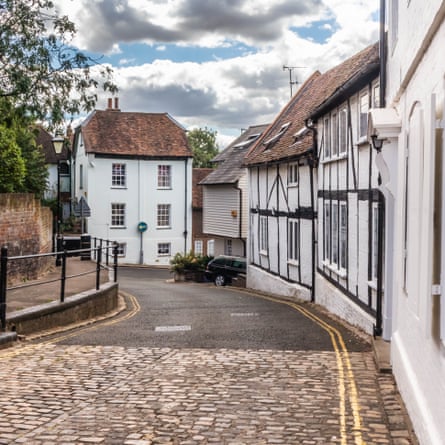
From the train window near Aylesbury, you can see chalk hills, wooded valleys, big fields with traces of medieval farming and flowering hawthorn hedges. You can also see pylons, solar farms, and the building of HS2. Chiltern Railways trains are relatively reliable and sometimes get to London in an hour or so, but Buckinghamshire’s county town is far more than a potential commuter base. It has a strong sense of community, a mixed population, and great countryside.
The Chiltern hills are tantalisingly close and the timber-framed town of Wendover, with varied walks and Rumsey’s chocolate shop, is 10 minutes away by train. The Ridgeway national trail, running through ancient downs and bluebell-carpeted beech woods, starts a few miles east at Ivinghoe Beacon.
Aylesbury’s uneven reputation has kept houses slightly more affordable here than some other parts of the south-east. Last year, the constituency swung to Labour for the first time in its history. Affected in various ways by the HS2 route, there are also problems with traffic. The town has colour-coded cycle routes showing the best roads for bikes, like the Aqua Way to Watermead, where the lake attracts ducks and dragonflies.
There’s less of the boutique-and-vintage vibe that more touristy market towns can develop. Aylesbury has the lived-in feel of some London neighbourhoods, but seems friendlier. There are Polish and Korean shops and an African cash and carry, Salt and Spices superstore. It opened a few months ago and has bunches of fresh fenugreek and coriander along with okra, quinces, papaya, lentils, rice and gram flour.
St Mary’s Church stands at the cobbled heart of the old town. “It’s like a little village round here,” says graphic designer Mel Walker, greeting passersby. “OK, it’s not the sleepy little market town it was,” she admits, “but it’s got so many positives going for it.”
St Mary’s hosts concerts and a community group called Space. Aylesbury has parkruns through the fields and badminton at the Methodist chapel. Yarn bombers decorate the square, while the Tour de Vale charity bike ride starts and ends in the town.
Aylesbury’s Discover Bucks Museum houses displays including the Lenborough Hoard, and the Roald Dahl galleries are part of the museum’s child-friendly offering.
“I love this place of possibility,” reads one of the inscriptions that decorate the Exchange, a colonnaded shopping area with a cinema and bunch of restaurants. The latest offering is Aurelia, which opened in late 2024 and has quickly become busy, offering a cornucopia of Italian dishes, from arancini rice balls to zenzeroni king prawns.
Where to go
The King’s Head is a medieval coaching inn with a cobbled courtyard. Owned by the National Trust and leased to Chiltern Brewery, it serves real ales and beautifully cooked pub classics.
What to do
The Waterside theatre puts on West End musicals and TV comedians. The town’s 122-year-old Literary Club is based on Temple Street, which is also home to Bucks Archaeological Society, holding regular talks in winter and outings in summer.
Where to breathe
A lovely walk along the Grand Union canal, past swans and moorhens, starts near the Waterside theatre.
Where to buy
Characterful cottages sometimes come up in the town centre while the suburbs have more affordable modern houses. Flats can cost anything from about £80,000 up to £380,000. Terrace houses average around £350,000 and three bed semis go up to £600,000. Detached houses with four bedrooms, start around £450,000.
PT
Midlands
Shrewsbury
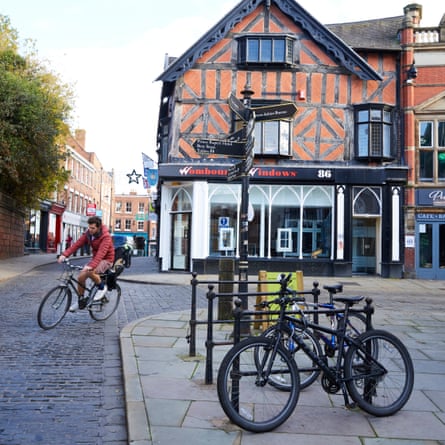
Beautiful timber-framed Tudor buildings cluster the centre of this market town, encircled by a loop of the river Severn. Shrewsbury sits on the doorstep of Wales as well as the rolling Shropshire hills, and you can get to Birmingham or Manchester by train in just over an hour.
Shrewsbury has been named as one of the country’s top places to live in multiple polls, while its high street has been ranked as one of the best in Britain, with lots of thriving independent shops. It has some of the top schools in the West Midlands, low crime rates, plenty of food and drink choices and beautiful period architecture.
The town is perhaps best known for its indoor market, which was recently voted Britain’s favourite for the third year running. With over 600 listed buildings, it has dozens of historic pubs, including The Nags Head which dates back to the 16th century and featured in the 1984 movie adaptation of A Christmas Carol.
Look up and you’ll notice lots of quirky details. Number 16 High Street (now a Costa Coffee) is a crooked Tudor building which in the 1990s was adorned with a carving of Margaret Thatcher and Michael Heseltine. The 16th-century Old Market Hall has been beautifully restored and is now home to a cinema and cafe bar.
Charles Darwin, Shrewsbury’s most famous son, was born here in 1809. The landscape helped inspire his love of the natural world – in the town centre you will find the Bellstone, a granite boulder which was his first introduction to geology.
Where to go
For fine dining try The Walrus – featured in this year’s Michelin guide. The Riverside Inn on the outskirts of town has beautiful water views, while Casa Naranjo, a family-run tapas bar, is popular with the locals.
What to do
At Theatre Severn, you’ll find a constant stream of productions to see in the 650-seat auditorium.
Where to breathe
North of the town is Hawkstone Park, 100 acres of Grade I-listed landscape.
Where to buy
The average asking price for a semi-detached is £293,244. Suburbs south of the river such as Belle Vue, Abbey Foregate and Meole Brace are considered some of the nicest areas to live.
JM
Worcester
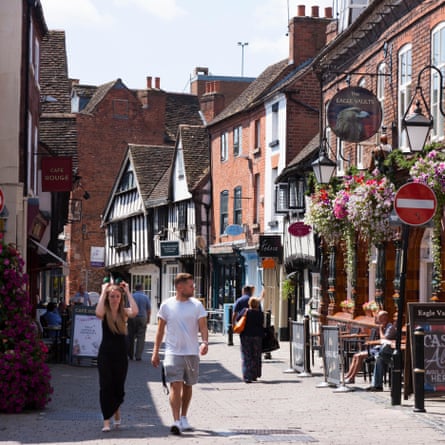
This West Midlands city has beautiful cobbled streets as well as dozens of shops and restaurants, and plenty to see and do. The beautiful Worcester Cathedral dominates the city centre – King John is among the historical figures buried there.
Compared with many other cities, it is affordable and has a low crime rate. This is in addition to a rich history, plenty of green spaces, and good transport links across the Midlands and south. Other strings to its bow include being home to Lea & Perrins, creator of traditional Worcestershire sauce, and Berrow’s Worcester Journal, thought to be the world’s oldest newspaper still published every week.
If you want the convenience of city life, but without the urban sprawl, Worcester is a great choice. You’ll find all the main shopping brands, but the streets aren’t as crowded as in bigger cities. Its smaller size is its charm, with a warm and welcoming atmosphere in the centre. The University of Worcester, with a student population of around 10,000, adds a vibrant energy.
At the Worcester City Art Gallery and Museum you’ll find exhibitions from world-renowned artists and celebrations of local history – a current display features a huge selection of Lea & Perrins bottles through the years. There’s also the Worcester Paint festival, which brings street and graffiti artists to the city every year to create a series of murals.
It is particularly popular for families, with lots of good schools in the area and affordable house prices. There are a number of new housing developments, as well as plenty of early-20th century properties. It’s also within commutable distance from Birmingham.
Where to go
Restaurants such as Benedictos and the Olive Branch attract rave reviews. Visit Piston Distillery where you can become your own gin distiller.
What to do
Everything you might find in a larger city including axe-throwing, crazy golf, indoor go-karting, bowling and board game cafes. Theatres and cinemas, museums and art galleries and a weekly market.
Where to breathe
The Malvern Hills and the Cotswolds. There’s also Worcester Woods country park, or Gheluvelt Park in the city centre.
Where to buy
The average asking price was £253,000 in February. In the city centre, Diglis, Barbourne and St John’s are popular, and surrounding villages are also sought after.
JM
Scotland
Perth
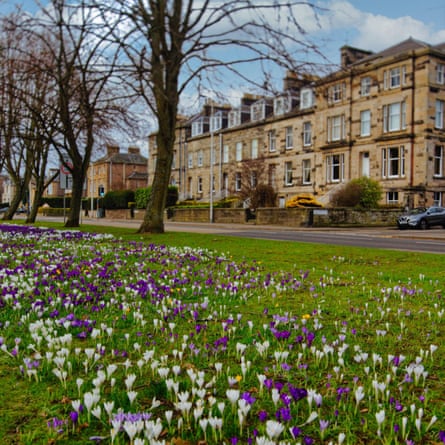
Perthshire is often called “big tree country”, but to those who know it well, it’s also waterfalls, canyons and lochs country. This part of Scotland plays its cards close to its chest compared to more famous parts of the country, but is dotted with the hippest villages (yes, they do exist) and food destinations, while also being jam-packed with opportunities to hurl yourself off a bridge on a bungee rope or down the UK’s wildest rapids on an inflatable raft.
Perth’s appealing position at the gateway to the Highlands has long been recognised as a prime real estate spot, with historians tracing settlements as far back as the prehistoric period. A rich bounty of archaeological finds from the region’s past are displayed at the light and airy Perth Museum, which reopened after refurbishment last year, complete with swish cafe.
This city of only around 47,000 people punches above its weight as a cultural hub, with a small but mighty art gallery, a theatre, a concert hall and an art deco cinema, not forgetting its annual arts festival. June sees Potfest, the UK’s biggest ceramics festival, hit the city, while August heralds Perthshire Pride.
There’s no escaping the fact that the city centre is struggling to recover post Covid, but its self-reliant spirit abides through its network of independent establishments, which include gems such as Concorde Music, Scotland’s oldest family-run record shop, and The Bean Shop for top-tier tea and coffee supplies.
Perth is bookended top to bottom by two riverside parks – North Inch and South Inch. As a residential district, the area of Central and South Inch encompasses not only the grand houses on the edge of the park, but city centre flats and the smartest parts of middle-class enclave Craigie.
Amenities are concentrated in the city and once you’re away home across the park, you’ll find little to entertain you other than the well-rated chippy. There’s a big Tesco on the city’s southernmost reaches, otherwise you’ll need to avail yourself of the Aldi, Lidl or Morrisons in the centre. For high-end provisions, a gourmet spread can be acquired from Provender Brown Delicatessen and topped up with Italian goodies from Casella & Polegato, cheeseboard provisions from The Cheese Byre or local produce from the monthly farmers’ market.
The central train station means you can reach Edinburgh in one hour 24 minutes and Glasgow in just over an hour. But with northbound trains heading to Aviemore and Inverness and some of the best scenery in the UK at your fingertips, you might be hard pressed to justify any journey south.
Where to go
Have cake for breakfast at Hinterland, where you can also pick up one of the city’s best flat whites. Go French at Cafe Tabou for lunch, before reverting to local classics at North Port for dinner (and a pint at The Twa Tams after if you’re in the mood for music).
What to do
Get out on the water, maybe fishing for salmon, wakeboarding or golfing on Moncreiffe River Island. Alternatively stay indoors at the leisure pool, which has slides galore.
Where to breathe
Cross the River Tay to explore pretty Rodney Gardens with city views. Follow Perth’s sculpture trail as it winds around the riverside heather garden, which at the right time of the year blooms in a riot of colour.
Where to buy
Average prices in the popular suburb of Craigie are £280,000 with two-bed flats in period buildings around £120,000. A three-bedroom apartment overlooking South Inch will set you back over £240,000.
Katie Collins
Haddington

Drive 30 minutes from Haddington in one direction and you can be in Edinburgh city centre, catching a fringe show or jetting off from the airport. Drive 30 minutes the other way and you can be riding horses along the beach in the shadow of Tantallon Castle or eating lobster and chips while gazing out at Bass Rock.
But to describe Haddington solely in terms of its proximity to nearby attractions would be a disservice to this small, friendly town that has a good deal going for it in terms of amenities and community spirit.
Away from the coast and just off the A1 with no train station of its own, Haddington flies under the radar compared with other pockets of East Lothian. In-the-know locals have no problem catching the express bus when they fancy a jaunt into the city but there’s plenty to keep them occupied nearby too, whether they’re meandering the Tyne river path or hunkering down in one of the many cosy pubs.
Since being classified a burgh by King David I in the 12th century, Haddington has grown into a thriving market town, with a jumble of historic buildings and properties from different periods. Today’s town centre occupies the same slim isosceles triangle of Market Street, High Street and Hardgate that’s made up the historic core for centuries.
Independent shops dominate the centre. These include clothing boutiques, a bookshop and wellness emporium, Oils in Bloom, which has the feel of an authentic Victorian apothecary. At the Foraging Goat, you can pick up homemade cullen skink pie and honey ice-cream. For the weekly shop, there’s a Tesco in the town centre and an Aldi in the retail park, plus a monthly farmers’ market.
Given Haddington’s network of riverside and cross-country pathways it’s no surprise that residents seem to be an active bunch. Cycling, squash, petanque, cricket, football – name a sport and you’ll probably find a club here dedicated to it.
Those less athletically inclined may find friends over at The Cheese Lady, the local fromagerie-cum-bottle shop, where you can join the “Fine Cheese Lovers Circle”. The Poldrate Arts and Crafts Centre and Made in East Lothian offer a mix of classes and gallery space for the artistically minded. Town beautification is also serious business, with community group Blooming Haddington winning gold in the Beautiful Scotland awards.
If this all sounds a little sedate, order pizzas from Mazzoli in town then head to the Haddy Tap, attached to Winton Brewery. If you’re lucky, there will be live music to accompany your hyper-local pint.
Where to go
The Loft is the go-to spot for coffee and brunch. The Waterside Bistro offers local beer and elevated pub grub to enjoy by the river.
What to do
There’s a leisure centre with a pool, a golf course and a skate park. Catch a film at the John Gray Centre. A 10-minute drive will take you to Foxlake Adventures where you can wakeboard.
Where to breathe
Haddington’s idyllic position means it isn’t short of green space, but for true tranquility don’t miss the Oriental Garden, the 17th-century St Mary’s Pleasance Garden and, just out of town, the Amisfield Walled Garden.
Where to buy
Period properties run the gamut from quaint to handsome, with a four-bedroom semi on Station Road priced at nearly £650,000. New builds on the western edge of town are cheaper. For something bigger you might need to push out even further and snap up one of the many local farmhouses.
KC
Wales
Aberystwyth
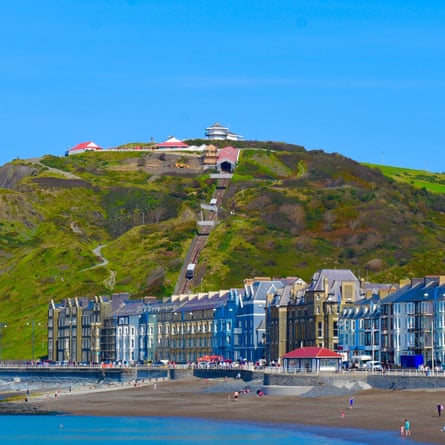
Aberystwyth feels a long way from any main city. Yes, Cardiff may only be 99 miles away but it can be three hours or more by road, over four by rail.
But the setting is spectacular. Aber, as it is often known, sits on Cardigan Bay, and Ireland is the next place you would make landfall if you were to set off westwards. The sunsets are spectacular and on balmy evenings attract a crowd to the sweeping promenade. You can surf along this coast and play golf at some lovely links courses.
Inland sits miles of rugged, sheep-dotted countryside, the peaks and valleys of the Cambrian Mountains where the rivers Severn and Wye rise.
No surprise that film and television makers like this landscape. The “Welsh noir” TV police procedural Y Gwyll (its English-language version was Hinterland) used the coast and mountains as suitably moody backdrops.
It’s not all about the landscapes and tourism, though. Aberystwyth is home to a university and major hospital, making it a diverse and vibrant place.
The university campus, perched on Penglais Hill above the town, teaches students from more than 100 countries, lending the town more of a global feel than might be expected. Also on the hill is the National Library of Wales, one of the great libraries of the world. Opened in 1907, it is at the centre of research into the culture and heritage of Wales and the other Celtic nations, and home to rare books, manuscripts, archives, film and video, newspapers, maps and works of art.
The Arts Centre is a hub for culture, creativity and entertainment, from gigs and theatre shows to exhibitions and screenings of independent films, via dance and pottery classes.
Aber and the countryside around it is one of the strongholds of Cymraeg – the Welsh language. The language is spoken in the streets, the shops and all the public institutions. There are lots of courses on offer to those who wish to learn and doing so is bound to increase understanding of the town, the region and the country.
Politics can be lively here. This is a Plaid Cymru heartland – the nationalist party has represented the constituency since 2017.
There is lovely architecture in Aber. Elegant Victorian and Edwardian terraces look out on to beaches of dark sand and shingle. The pier was built in 1864 and was once 242m long but heavy storms over the years have reduced it to 91m, a reminder that this place can be wild in the winter.
There is a nice alternative feel to Aberystwyth. For decades people with an interest in the environment and a desire to escape the rat race have found a new home here.
Where to go
The delicatessen Ultracomida is a favourite for people seeking a taste of Spain. Try Sophie’s on North Parade for the hearty breakfasts, Siop y Pethe for your Welsh books and gifts.
What to do
The longest electric funicular railway in Britain shuttles visitors up 237 metres to one of the world’s largest camera obscuras. Loads of exhibitions are held at the National Library and Aberystwyth Arts Centre. Take a boat and head out to see the dolphins if you don’t fancy getting in yourself.
Where to breathe
The Victorian promenade is great for runs, walks, moments of mindfulness. Fill your lungs at the top of Constitution Hill, from which – on a clear day – you can see 26 mountain peaks.
Where to buy
A characterful three-bedroomed townhouse in the town centre, a short walk from the beach, costs around £225,000. A five-bedroomed house with sea view on Marine Terrace could set you back about £425,000.
SM
London
The Ridgeway, Enfield

Opposite Chase Farm hospital in Enfield is a small network of roads off The Ridgeway that serve as a gateway to the countryside north of London. The Ridgeway itself goes on for miles, but it’s the neighbourhood around the hospital that features on our list. The Ridgeway Tavern sits here, but further up the road is the Robin Hood, which is well regarded for its food. Two minutes’ walk from that is the Botany Bay Farm and Shop, which sells locally sourced goods.
Gordon Hill station is the quickest way into the city, with trains to Finsbury Park (21 minutes) and Moorgate (37 minutes). Lavender Hill, with its postwar terraces and 1930s houses, leads from the station to The Ridgeway where mock-Tudor homes and new builds sit side by side.
Just north of the hospital, cyclists and walkers can join the Enfield Greenways, a part of the National Cycle Network. For shopping, nearby Enfield will provide for most of your needs.
Where to go
The Sunday roasts in the Robin Hood pub are a local favourite.
What to do
The Ridgeway pub holds live music nights while the Chickenshed theatre is 10 minutes by car.
Where to breathe
Nearby Trent Country Park has 413 acres of woods, lakes and meadows, a Go Ape and a cafe.
Where to buy
A modern two-bed on Farorna Walk, across from the hospital, has a guide price of £570,000. A one-bed 548 sq ft flat in the new Old Royal Chace development is priced at £375,000.
Shane Hickey
Surbiton North

This is suburbia straight out of central casting … but (it could be argued) just the good bits. It’s definitely leafy, with some lovely parks and green spaces, and lots of tree-lined streets. You can hear birdsong as you stroll along them. And you’ve got the Thames right at your doorstep.
For those of a certain age, Surbiton, on the south-west fringes of London, will be forever associated with classic 70s sitcom The Good Life.
The Surbiton North neighbourhood still feels like a place for anyone looking to escape the urban bustle, but it’s also perfectly located for those who need quick and easy access to the Big Smoke. One of its biggest selling points is its speedy commuting time into Waterloo: the fastest trains take just 15 minutes.
A walk down St James’ Road and along one of the “River Roads” will take you to the Thames in a few minutes. Via a slightly more circuitous route you can sample Claremont Gardens, a tranquil crescent-shaped park with paths, benches and a small pond.
Maple Road is probably about as buzzy as this area gets. One local estate agent described it as “a bustling and trendy community stacked with coffee shops, independent stores and a diverse dining scene,” which might be overdoing it a bit, but it’s certainly a nice spot, with a lovely little park (St Andrew’s Square) and a parade of shops including well-regarded eateries, clothing boutiques and the like. Its award-winning farmers’ market held on the third Saturday of each month typically features more than 25 stalls.
The top of Ewell Road also falls within this neighbourhood, as does the residential area known as Berrylands, which is popular with families.
Where to go
The Harts Boatyard is a great place to watch the world go by.
What to do
If you’re into messing about on the water, Thames Sailing Club, founded in 1870, is the UK’s oldest river sailing club. Just up the road is Kingston’s Rose theatre.
Where to breathe
Fishponds Park, down the road, is a great spot for a stroll.
Where to buy
The River Roads, are a top spot: you might be looking at around £475,000 for a two-bed flat in Grove Road or Cadogan Road. You can add a bit more for a Thames view.
Rupert Jones
Clapham Junction

Estate agents always bang on about “good transport links, close to green spaces, a variety of amenities,” but in the case of the neighbourhood around Clapham Junction, it’s not hyperbole.
For journeys between Clapham Junction and London Victoria or Waterloo, you can be looking at as little as six and eight minutes respectively. For motorists, this area is ideally located for both the A3 and the A205 South Circular.
On the greenery front, Clapham Common and Wandsworth Common are just down the road. While Northcote Road is loaded with trendy cafes, independent retailers, galleries, bars and clothes shops.
For comedy, club nights, gigs and bingo check out the Clapham Grand or for more left-field fare, Battersea Arts Centre.
The other main drag is Battersea Rise, where night owls will find bars and fast food joints. Keep walking east and you will soon get to Lavender Sweep, a residential crescent as lovely as it sounds.
Where to go
Locals big up The Eagle Ale House on Chatham Road. Italian restaurant Taverna Trastevere on St John’s Hill is highly rated.
What to do
In terms of the wider area, there’s loads happening for people with babies and kids.
Where to breathe
Clapham and Wandsworth Commons. Walk west or north and you’ll soon reach the Thames.
Where to buy
A five-bed terrace in Shelgate Road for £2.1m. Offers over £700,000 for a two-bed flat in Northcote Road.
RJ
Bounds Green

It’s hard to pin down where Bounds Green starts and ends but that amorphousness is no bad thing: shops and cafes that may actually be in Muswell Hill and the amenities of Bowes Park are all easily accessible.
Just off the crossroads that the (Zone 3) tube station sits on are a couple of popular cafes: Hot Milk and the White Fig Bakery. On Durnsford Road you’ll find the independent Sunshine Garden Centre.
There are tennis courts at Oliver Tambo Rec, which teems with footballers at the weekend, while the Bounds Green Bowls and Tennis Club is a hidden gem.
The area is popular with families keen to get into the catchment area of Alexandra Park secondary school.
From several points you can see Alexandra Palace, and the London landmark is a short walk away. Handy for exercise and culture, as well as headline music acts in the main hall, the theatre also regularly hosts comedy and plays.
Where to go
The Ranelagh for drinks and live music. The Prince is probably technically Wood Green, but worth the walk for its excellent menu.
What to do
Sports classes in the rec. Ally Pally for ice-skating, a go on the boating lake or something a bit more cultural.
Where to breathe
Bluebell Wood, a patch of ancient woodland. For 200 acres of fresh air try Alexandra Park.
Where to buy
Semi-detached 1930s properties near Alexandra Park school are upwards of £1.2m. Nearer the station, one-bedroom flats are on sale for around £300,000.
HO
Bromley
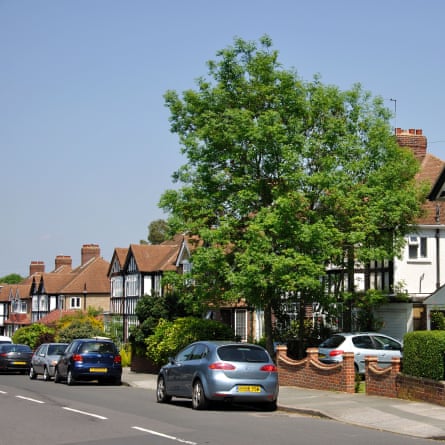
Bromley is part large town with plenty of green space, parks and a bustling shopping centre and part London with the transport and infrastructure typical of the capital.
The centre is a shopping destination and the main street backs on to the Glades shopping centre. Both are filled with a mix of chain stores and independent shops, while the main drag is the site of the weekly Charter Market.
The Churchill theatre hosts comedians and shows, while St Mark’s Square houses a multiscreen cinema. The Pavilion leisure centre offers 10-pin bowling and the large pool has flumes and a wave machine.
One of the town’s biggest advantages is the multiple fast rail links into central London and down to the Kent coast.
There are numerous green spaces, including Jubilee Country Park, and the National Trust’s Petts Wood and Hawkwood. Bromley Common offers multiple fields, horses and Norman Park. The recently promoted Bromley FC provides EFL League Two sporting action.
Where to go
The Barrel & Horn on the High Street has craft beer, a games room and music nights.
What to do
Take in a show at the Churchill theatre.
Where breathe
Go for a walk through the woods and fields of Petts Wood and Hawkwood estate and you’ll forget you’re in London.
Where to buy
Mansions around Chislehurst from £1.5m, plentiful 1930s semis closer into town from £600,000, Victorian terraces about £400,000 and flats from £250,000.
Samuel Gibbs

 5 hours ago
6
5 hours ago
6













